On Thursday, India and Australia meet in Adelaide to battle for the first match of the Border-Gavaskar Trophy. They first met at the venue over 70 years ago, in the first Test ever played between the two nations.
Adelaide has been home to some of the most entertaining Tests in Australian cricket's recent history. The three day-night Tests it has hosted, have all provided wonderful spectacles, and the 2006 Ashes Test, affectionately referred to as 'Amazing Adelaide,' remains one of the nation's proudest cricketing achievements.
But the games Australia and India have played against each other deserve their own chapter, as the two sides have played some sensational Tests at the beloved venue.
Despite the day-night Tests offering a refreshing amounting of seam for the bowlers, the Adelaide Oval is historically, a batsman-friendly wicket.
This is partly due to the short square boundaries, and also because of the even bounce the pitch generally offers. It has arguably become even more batsman-friendly since 2013, when drop-in pitches started to be used, meaning, the wicket deteriorated less as the match progressed.
Being less favorable to pace bowling than any of the other main grounds in Australia, and often being more inviting for spinners than any other ground barring Sydney, Adelaide has time and again seemed the venue best-suited for Indian players.
This has certainly been witnessed through some exceptional innings by Indian batsmen, dating back to Vijay Hazare's performance in the first Test ever played between the two sides.
This was in 1948, where an Indian side, still establishing themselves as a Test-playing nation, took on one of the greatest sides Australia had ever fielded.
As expected, Australia won easily, with Sir Donald Bradman scoring 201. But Hazare refused to be overawed by the occasion, scoring a century in both innings.
66 years later, Virat Kohl would replicate this feat at the very same venue.
Between these individual milestones, the likes of Sunil Gavaskar, Mohammad Azharuddin, VVS Laxman, and Sachin Tendulkar have all found joy batting on the famed Adelaide wicket.
Their performances, among others, have helped make Adelaide a key venue for one of cricket's strongest rivalries.
#5 1978 (Australia won by 47 runs)
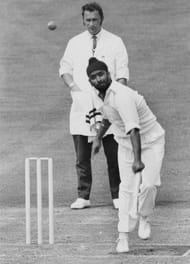
The ball-tampering debacle sees Australia enter this current series in disarray, but even their present issues are nothing compared to what they had in 1978.
This was because the five-match series with India was the first since World Series Cricket had begun. The Chappell brothers were gone, and so were Dennis Lillee, Rod Marsh and several other talented players.
They had been replaced by several decent state cricketers, and Bob Simpson, who had returned to lead the team after spending seven years in retirement.
With India having the likes of Gavaskar, Syed Kirmani, Bishan Bedi and Bhagwat Chandrasekhar in their side, this was probably their best chance of winning a Test series in Australia to date.
What evolved was an incredible contest. Australia edged the first two games by the narrowest of margins, but India reared back and won the third and fourth Tests resoundingly. This meant that going into the final Test at Adelaide, the series was poised at 2-2.
Australia started just as the would have wished. Centuries from Graham Yallop and the veteran, Bob Simpson, would lead them to a first innings total of 505.
They then limited India to just 269, with Gundappa Viswanath's 89 being the only positive India could take from the innings.
But India had shown resilience to come back from 2-0 down in the series, and now showed similar resilience as they began to claw their way back into the match.
Australia opted against enforcing the follow-on, perhaps thinking they had knocked the fight out of India, but were restricted to 256, with Bedi and Karsan Ghavri taking four wickets each.
This left India needing what would have been a record-breaking 493 for victory.
Remarkably, they almost managed it, falling just short with 445, having at one stage been 6/415.
All India needed to make the difference was one batsman to make a big score, as the innings ended without any of their batters reaching a century.
Australia had the last laugh, as they won the series 3-2.
#4 1981 (Match drawn)
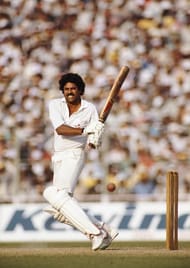
With the World Series Cricket wrapped up, Australia was a very different prospect for India in 1981. India had changed too. No longer were Bedi and Chandrasekhar in the side, but they did now have the formidable presence of Kapil Dev.
The first game in the series saw Australia's old stars guide them to victory. Greg Chappell scored a double century, and Dennis Lille took seven wickets as Australia won by an innings and four runs.
Things didn't appear to be improving in Adelaide either. A double-century by Kim Hughes, and a century by Graeme Wood led Australia to a first innings total of 528.
But as they had shown four years early, India had the ability to bounce back.
India made a spirited reply, making 419 in their first innings. Chetandra Chauhan ensured India started strongly. He fell painfully short of a hundred, scoring 97. It would prove to be the closest he would get to making a century in Test cricket.
But Chauhan's efforts in blunting Australia's pace attack certainly proved beneficial when Sandeep Patil came in and smashed 174. This too was his career best, as he led Greg Chappell to use a total of eight different bowlers to try and stop his onslaught.
Australia were still ahead in the game, but were unable to push their advantage as the wished due to some disciplined bowling by the Indians.
Dilip Doshi did particularly well, using the crumbling Adelaide wicket to taunt the Australian batsmen. He may only have taken three wickets in this innings, but the fact he only conceded 49 runs in 33 overs when Australia were pushing for a declaration, highlights the quality of his performance.
With time wearing on, Australia would declare with a lead of 331.
India may have had some aspirations of going for the win, but it quickly became apparent that a draw was the best they would manage as Len Pascoe ran through their top order.
India lost wickets periodically throughout their 75 over innings, but it was only thanks to Yashpal Sharma that they survived.
The scorecard shows that Sharma only made 13, but he faced 157 deliveries on what had become a difficult wicket, before he was eventually dismissed by Bruce Yardley.
India would end up salvaging a draw at 8/135, enabling them to level the series in the following match at Melbourne.
#3 1992 (Australia won by 38 runs)
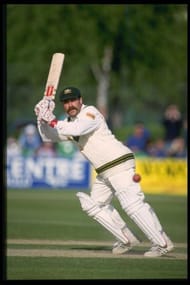
In a similar sense to the 1977/78 series that India lost 3-2, the 1991/92 was a series where the overall scoreline of 4-0 did not do India justice.
It was an intriguing series for many reasons. It saw Shane Warne playing his first Test, and also saw Sachin Tendulkar, rather more successfully, playing his first series in Australia. But the highlight of the series was the roller-coaster ride that was the fourth Test.
India started brilliantly, bowling out a strong Australian batting line-up for just 145. Tendulkar even continued his fine form by taking the massive wickets of Mark Taylor and Allan Border.
Yet, when it was India's turn to bat they failed to solidify their advantage. At one point it even seemed that Australia might take a lead in their second innings, as Merv Hughes and Craig McDermott powered through the Indian top order to have the visitors reeling at 6/70.
However, a half-century from Kapil Dev, and a series of contributions from the tail, meant that India still finished their first innings with a healthy 80 run lead.
But the match shifted as Mark Taylor and David Boon, who was in stunning form at the time, shared a 221-run partnership. Border would then ensure Australia had a strong lead with an unbeaten 91.
Kapil Dev toiled in the Australian sun, and showed great athleticism to push through 51 overs and take 5/130. But Australia still managed 451, posing India a target of 372 in their final innings.
Like they did in 1978, India overcame the turn offered by a fourth-innings Adelaide pitch, and ensured Warne went wicket-less as they forged towards their target.
A 101-run partnership between Azharuddin and Manoj Prabhakar saw India climb to 6/283. But they soon fell to an in-form McDermott, who ended the match with 10 wickets as he finished off the tail.
India had come close to stifling Australia's comeback, but their top order fell too cheaply to Australia's pace attack in both innings.
#2 2003 (India won by four wickets)
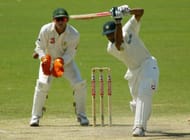
This time India pulled off the fourth innings chase, as they had come so close to doing in Adelaide twice before.
The 2003/04 series was a run fest. The pitches favored the batsmen, and the quality of batsmen was immense on both sides. The first Test in Brisbane had ended in a draw, but there were positive signs for India, as the visitors had taken a first innings lead of 86.
Yet the way the Adelaide Test started was anything but positive for India. Australia piled on 556 as Ricky Ponting led the way with a brilliant 242.
Anil Kumble was the only bowler who ended the innings with respectable figures, as he took 5/154 and ensured Australia's innings ended before they could declare.
India needed something special in reply, and they seemingly resurrected the spirit of the incredible 2001 Test in Kolkata, as Rahul Dravid and VVS Laxman linked up to share a 303-run partnership.
Their batting positions reversed from what they shared in 2001, as this time it was Dravid who made the double-century, scoring 233, while Laxman scored 148.
India ended up almost equaling Australia's first innings score, eventually being all out for 523.
At this point, most spectators probably thought the match would be a draw. Though even then it was Australia who had the advantage, having a small lead, and also having the knowledge that India would have to bat last on the increasingly spin-friendly wicket.
What they didn't account for, however, was an incredible swing bowling display by Ajit Agarkar.
By this stage in his career, Agarkar had played 17 Tests, but had never taken more than three wickets in an innings. But something seemed to click for Agarkar in Adelaide, as he doubled his previous best by taking 6/41.
Australia had probably felt it important to weather out Kumble's bowling, but they fell for 196 despite Kumble only taking one wicket.
India still had 233 to chase though, and the pitch was now on Australia's side. But more importantly, Dravid was on India's.
Dravid backed up his brilliance in the first innings with an unbeaten 72 in the second, to see India home. This win was their first in Adelaide, despite how close they had come in earlier games. It also gave them the series lead, as they would eventually draw the series 1-1 to retain the Border-Gavaskar Trophy.
#1 2014 (Australia won by 48 runs)
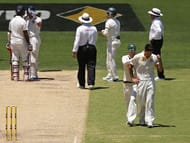
Tragic circumstances meant the first Test of this series was played in Adelaide rather than Brisbane, as Phil Hughes passed away after being struck by a bouncer.
The Test therefore commenced in a surreal environment, with celebration and mourning in equal parts.
With MS Dhoni injured, Virat Kohli captained the team, and the Indian selectors surprising many by opting to play Karn Sharma ahead of Ravichandran Ashwin - a decision that has not aged particularly well.
David Warner quickly put Australia on the front foot. India opted for a strange strategy of bowling wide outside the off-stump to Warner, and soon found the tactic to not only be ineffective, but very costly.
Warner would make his century, as would Steve Smith and Michael Clarke, with Clarke's century coming after he had spent time off the field mid-innings to receive treatment on his back. The emotion was clear when he reached the milestone, but even with Australia declaring at 7/517, the match was far from over.
India's fightback was a strong one. Kohli would play a superb innings, despite being hit in the head early in his innings in a moment that chilled the crowd and visibly disturbed Mitchell Johnson, who had delivered the ball. He found good support from Cheteshwar Pujara and Ajinkya Rahane on his way to a landmark century.
Yet India may still have felt they could have made more than the 444 they ended up with, having been at 4/367 at one stage. It was Nathan Lyon who stopped them from making more, as he took 5/134 on the ground he used to be a curator at.
Australia, desperate to boost morale with a win, made an aggressive declaration at 5/290, with an overall lead of 363. Warner once again led the way with another century, while Mitchell Marsh also found some joy by being given license to swing, making 40 off just 26 balls.
India then responded with an indication of how they would play under Kohli, matching Australia's aggressiveness by going for a win. The two teams' willingness to attack made day five one of the best days of cricket the Adelaide Oval had seen.
Kohli was perhaps even better in this innings than he was in India's first. He and Murali Vijay combined for a partnership just shy of 200 runs. India were 2/242 when Lyon made the breakthrough, dismissing Vijay on 99. As Lyon dismissed Rahane for a duck soon afterwards, India found themselves at 4/242, with the match perfectly poised.
Despite wickets falling at the other end, Kohli continued to attack with class and skill. But, in a game-changing moment, he hauled out to Mitchell Marsh, off the bowling of Lyon, meaning India were 7/304 with the game in Australia's favor.
From there the tail fell cheaply, with Ishant Sharma the last man out, and Lyon ending with seven wickets in the innings and 12 in the match. Australia had won the game, but India had made a statement with the way they played.
The series unfortunately dwindled out due to lifeless pitches that offered the bowlers little, a problem that has plagued Australian cricket in recent years.
Since the match, the Australian team has undergone huge changes, with Mitchell Marsh and Nathan Lyon the only ones still in the side, despite the game taking place just four years ago.
India, meanwhile, come into Thursday's game as the more established side, with their batting line-up in particular being similar to what it was in 2014. Hopefully the Test is played with similar intent, and provides equal excitement.
Brand-new app in a brand-new avatar! Download Cric Rocket for fast cricket scores, rocket flicks, super notifications and much more!
